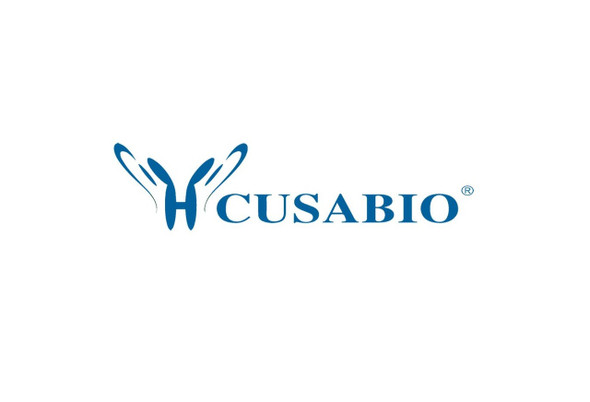Cusabio Clostridium botulinum Recombinants
Recombinant Clostridium botulinum Penicillin-binding protein 1A (pbpA), partial | CSB-EP401992CWV
- SKU:
- CSB-EP401992CWV
- Availability:
- 3 - 7 Working Days
Description
Recombinant Clostridium botulinum Penicillin-binding protein 1A (pbpA), partial | CSB-EP401992CWV | Cusabio
Alternative Name(s): Peptidoglycan TGase DD-transpeptidase
Gene Names: pbpA
Research Areas: Cell Biology
Organism: Clostridium botulinum (strain Hall / ATCC 3502 / NCTC 13319 / Type A)
AA Sequence: VDRISGKLPTQLSYRDPRGSTVYNEFFINGTIPTEYDDIHVEAQINKLTGKLASKFTPSFLVESRVFLRRDYSPGVELLDQQWLLPYSIDEGGSLPPTEEKNNSNTRDKNKDKNKNKNKDKNPSQDKPNNNNNDNNSNNNNNNNDNNNNTKPPENDSNQNHEDNKNKQ
Source: E.coli
Tag Info: N-terminal 6xHis-SUMO-tagged
Expression Region: 663-830aa
Sequence Info: Partial
MW: 35.2 kDa
Purity: Greater than 90% as determined by SDS-PAGE.
Relevance: Cell wall formation. Synthesis of cross-linked peptidoglycan from the lipid intermediates. The enzyme has a penicillin-insensitive transglycosylase N-terminal domain (formation of linear glycan strands) and a penicillin-sensitive transpeptidase C-terminal domain (cross-linking of the peptide subunits).
Reference: "Analysis of the neurotoxin complex genes in Clostridium botulinum A1-A4 and B1 strains: BoNT/A3, /Ba4 and /B1 clusters are located within plasmids." Smith T.J., Hill K.K., Foley B.T., Detter J.C., Munk A.C., Bruce D.C., Doggett N.A., Smith L.A., Marks J.D., Xie G., Brettin T.S. PLoS ONE 2:E1271-E1271(2007)
Storage: The shelf life is related to many factors, storage state, buffer ingredients, storage temperature and the stability of the protein itself. Generally, the shelf life of liquid form is 6 months at -20?/-80?. The shelf life of lyophilized form is 12 months at -20?/-80?.
Notes: Repeated freezing and thawing is not recommended. Store working aliquots at 4? for up to one week.
Function: Cell wall formation. Synthesis of cross-linked peptidoglycan from the lipid intermediates. The enzyme has a penicillin-insensitive transglycosylase N-terminal domain (formation of linear glycan strands) and a penicillin-sensitive transpeptidase C-terminal domain (cross-linking of the peptide subunits).
Involvement in disease:
Subcellular Location: Cell membrane, Single-pass type II membrane protein
Protein Families: Glycosyltransferase 51 family; Transpeptidase family
Tissue Specificity:
Paythway:
Form: Liquid or Lyophilized powder
Buffer: If the delivery form is liquid, the default storage buffer is Tris/PBS-based buffer, 5%-50% glycerol. If the delivery form is lyophilized powder, the buffer before lyophilization is Tris/PBS-based buffer, 6% Trehalose, pH 8.0.
Reconstitution: We recommend that this vial be briefly centrifuged prior to opening to bring the contents to the bottom. Please reconstitute protein in deionized sterile water to a concentration of 0.1-1.0 mg/mL.We recommend to add 5-50% of glycerol (final concentration) and aliquot for long-term storage at -20?/-80?. Our default final concentration of glycerol is 50%. Customers could use it as reference.
Uniprot ID: A5I6G4
HGNC Database Link: N/A
UniGene Database Link: N/A
KEGG Database Link: KEGG
STRING Database Link: N/A
OMIM Database Link: N/A









